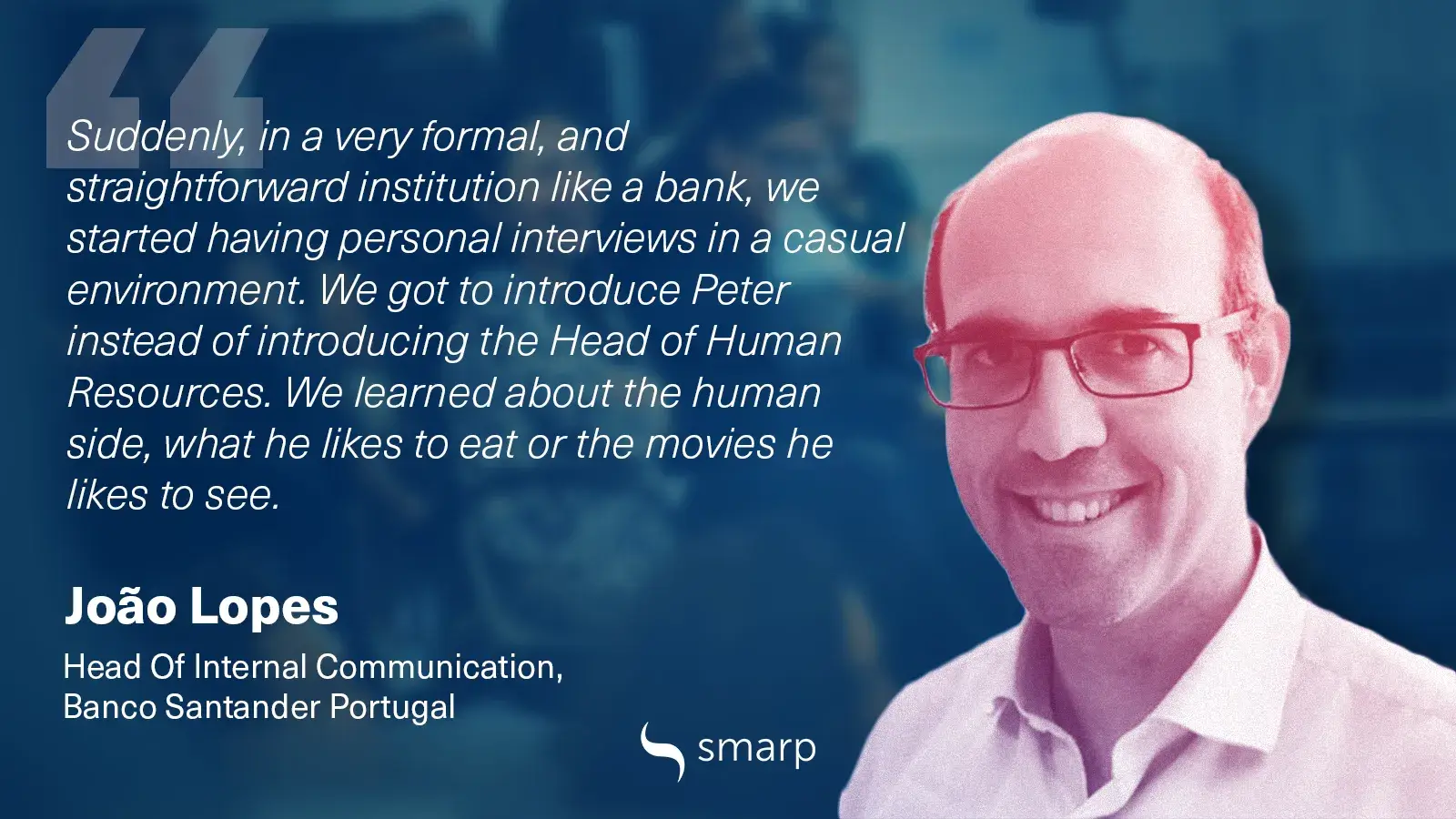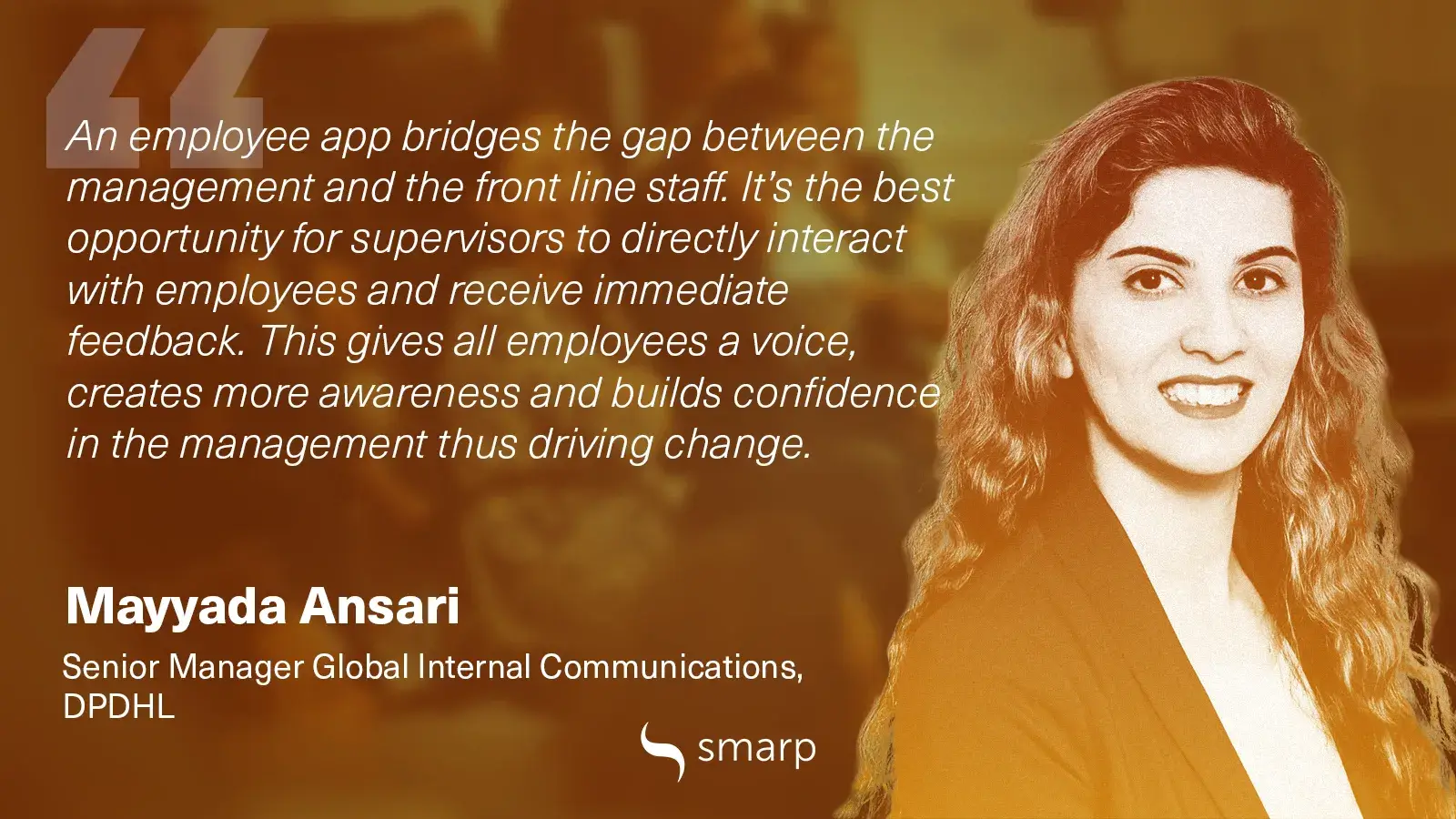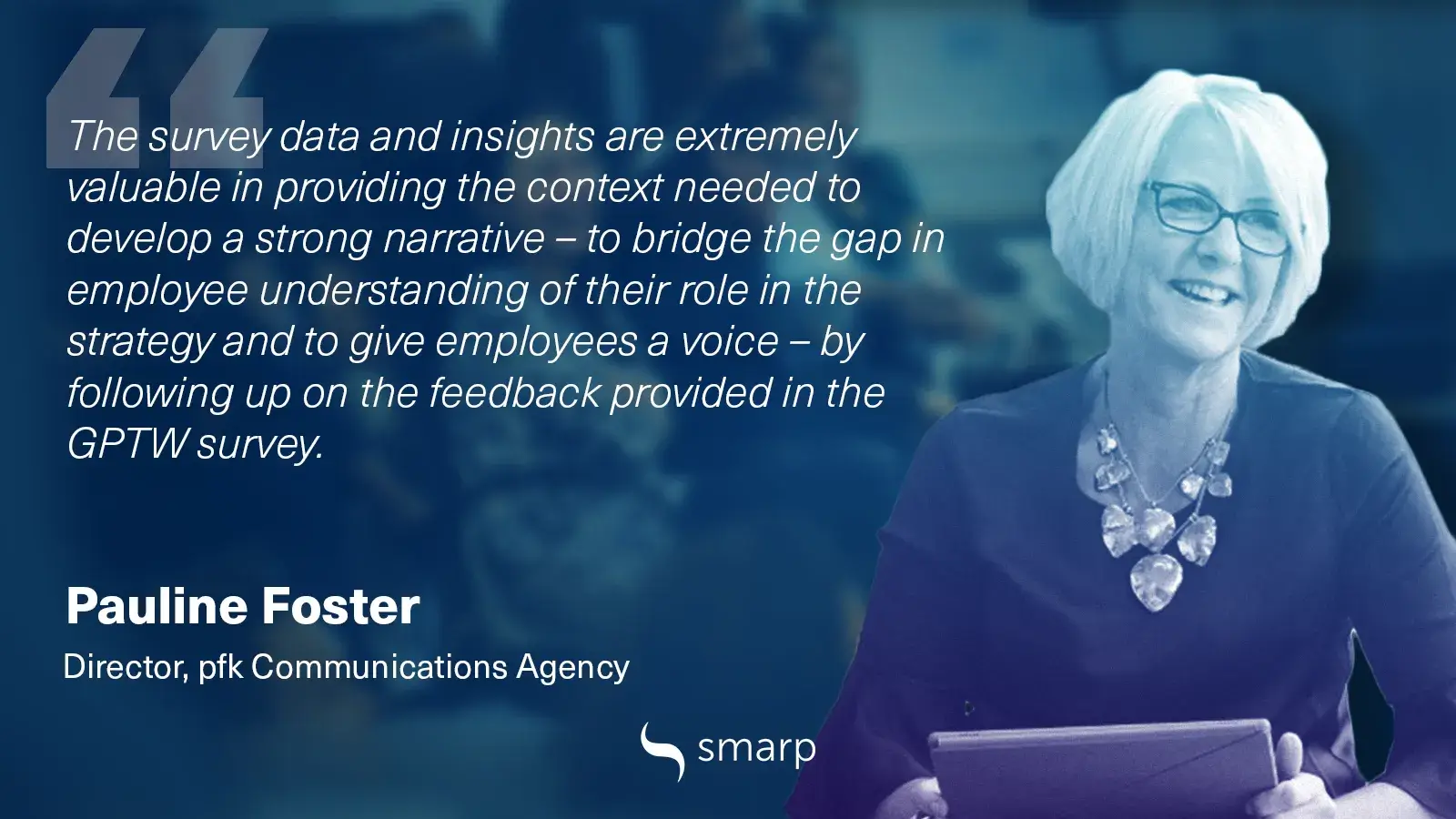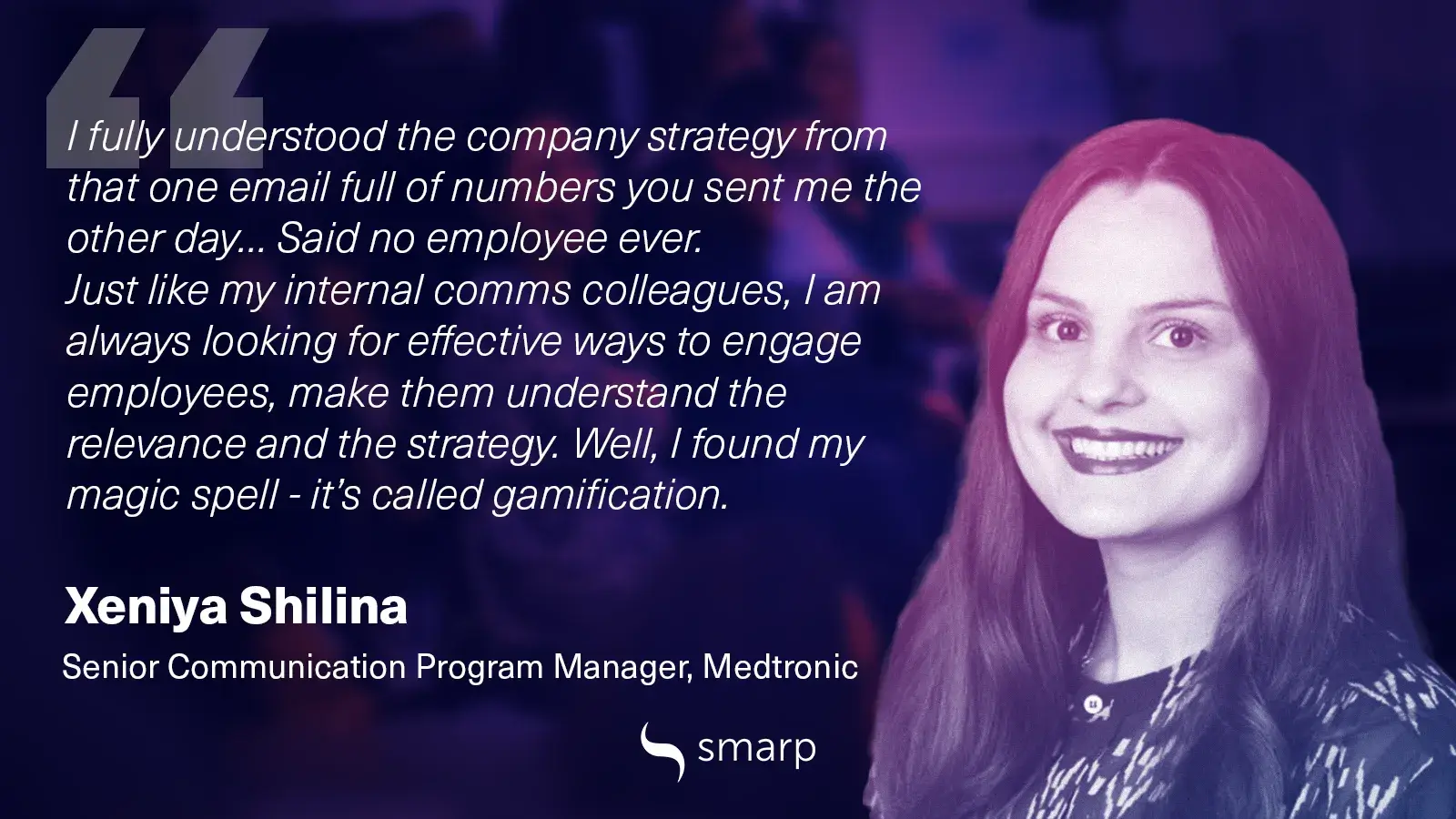Internal communication is a tough job. On average, you’ll find 1 communicator for every 1,000 employees. Add to that the complexity of enterprise organizations operating in different countries and timezones, with multiple offices, business units, functions, languages, in-office, and remote.
Communication professionals are cornered by the complexity of channels available today (mobile, desktop, email, intranet, enterprise social networks, workstream collaboration tools, digital signage, print, and even good old fashioned mail) and the ever-growing expectations from employees to be reached in their preferred channels and devices which you have a handful. No doubt about that.
The thing about challenges is… they create opportunities. In the midst of it all, many internal comms pros are setting themselves apart from the pack by delivering incredible work.
We wanted to inspire everyone with some success stories so we decided to reach out to 5 top internal communication legends and gather some motivational cases of great internal communications in their own word.
Looking to improve internal comms in your own organization? Let us show you how!
👇Here we go:
The power of humanizing your leaders
João Lopes, Head Of Internal Communication, Banco Santander Portugal
Santander Portugal is in the midst of its Cultural Transformation. And of course we can upgrade our systems, modernize our branches, and simplify our processes, but to change how people work and how people interact with one another it is the most challenging change of them all. As Internal communication, we are a key part of that change. It is our mission to give voice to all initiatives that show that the cultural transformation is more than a strategy, it is a reality.
One thing we did that caught everyone by surprise was a Carpool Karaoke. Suddenly, in a very formal, and straightforward institution like a bank, we started having personal interviews in a casual environment, talking not only about the bank, its goals, or the goals of a specific area, but also about the people behind the job position. We got to introduce Peter instead of introducing the Head of Human Resources. We learned about the human side, what he likes to eat or the movies he likes to see.

a quote from Joao Lopes, Banco Santander Portugal
It worked very well, and by doing something out of the box it was a good way to show internally that the bank is changing, in order to be more open, personal and modern. But although it worked very well, it is something that can only work when it is a part of a global movement inside an institution. Culture must be the strategy and individual initiatives without being part of a global strategy won’t have the same effect.
Help your listeners relate to your message by using stories
Suvi Koivusalo, CEO, Game Captains
Sometimes we struggle with making our communication relatable to our audience. Often it’s simply a case of falling into the Curse of Knowledge. When you know your own stuff extremely well, it’s easy to forget how it feels to be a novice. For example, the local tax law is a whole different matter when introduced to a company’s legal department or an overseas graphic designers’ team trying to put together an infographic.
If you really want your audience to listen to you, articulate your brilliant ideas and knowledge in a way they understand. Connect what you’re saying to something your audience already knows about. If you don’t know them personally, it’s always a good idea to pick something from pop culture. For example, you can find parallels between your topic and a popular Disney film: “We rather our company values to match those of Mufasa than Scar.” You can also connect your message to something local: “If our client numbers in this venue rise 30% it will feel like entering Oxford Circus Tube Station at 6 pm on a weekday” (it’s near lunacy and really sweaty!).
Start with an easy exercise for yourself. What’s a story that helps people remember your name? For example, when I’m working with Americans, I often ask them to think of a big car, an SUV, when meeting me for the first time. And magically, they all remember my name (Suvi). When your audience relates to what you’re saying, it’s much easier for them to understand and remember your message.

a quote from Suvi Koivusalo, Game Captains
Employee app deployment is not easy. But it’s worth it
Mayyada Ansari, Senior Manager Global Internal Communications, DPDHL
We have all used in-house tools, emails, and print material exhaustively intending to communicate with all employees. But is this going to be a cycle that we will keep on repeating for decades? At least to my delight – the answer is no. The advent of technology has resulted in tremendous sustainable opportunities for internal communications to create a strong virtual culture and drive engagement mainly through apps.
A huge number of employee population nowadays in the biggest organizations is either offline, remote or on the go. Connecting to these colleagues has always posed a challenge for internal communications experts. Now is the right time to overcome this challenge by introducing apps.

a quote from Mayyada Ansari, DPDHL
A communications or employee app enables organizations to offer its employees relevant, time-sensitive information such as industry news, announcements, stories, best practices, policies, job postings, events and campaigns that is accessible from anywhere, anytime. It fosters interaction by allowing employees to participate in competitions, enjoy gamification, post images, upload videos and write blogs which result in liking, commenting, sharing and connecting with colleagues. And this all can be measurable because unlike other traditional forms of communications, apps have a metric system that allows instant analysis of content relevancy and employee engagement among other parameters.
Most important of all, however, is that an app bridges the gap between the management and the front line staff. It’s the best opportunity for supervisors to directly interact with employees and receive immediate feedback. This gives all employees a voice, creates more awareness and builds confidence in the management thus driving change.
So is the deployment of an App in an organization easy peasy? Well..unfortunately not. I can guarantee though that the outcome will be worth it. The process of launching an App can be easy if you are answering the right questions right from the beginning; does your organization have the technical, legal (data protection, security, workers union) and HR infrastructure suitable for deploying an App to all employees? Are the costs of licenses covered? Do you have enough resources available to manage and administer an App? Are there several languages available on the App? Is management ready to role model? Are communicators enabled to make use of a new channel to its full potential? Is a proper plan in place for pre-launch awareness and post-launch monitoring? These and many other questions are the key to a game-changing experience for you and your organization.
Enjoy the new era of communicating!
Always begin with some form of data to get the all-important context
Pauline Foster, Director, pfk Communications Agency
In 2012, Marshall Aerospace and Defence Group (MADG) was facing challenges from changes in their contracts with the Ministry of Defence and increased competition from the private sector. They knew they needed to engage their workforce in a significant change in order to deliver £300m in sales by 2020. But the annual Great Place to Work (GPTW) survey reported extremely low engagement and a workforce that was largely resistant to change.
The data and insights from GPTW were extremely valuable in providing the context needed to develop a strong narrative – to bridge the gap in employee understanding of their role in the strategy and to give employees a voice – by following up on the feedback provided in the GPTW survey.
This led to the creation of ‘Engaging for Success’, a phased program that began with the leadership conference and spanned 10 months, 17 events, 1,323 people…all working together to identify ideas to break down barriers to make MADG a great place to work. The outcome? An increase of around 10% in engagement, reinforced by employee comments such as, “If I was asked again if this is a ‘Great place to work’ my comments would be totally different.”

a quote from Pauline Foster, pfk Communications Agency
The magic spell of gamification
Xeniya Shilina, Senior Communication Program Manager, Medtronic
The 21st century has been marked with breakthrough advances in almost every field ranging from driverless cars in the transportation industry to face transplants in the medical industry. The communications field has also seen significant advancement with social media and overall digitalization enabling faster and more user-friendly communication. However, internal communication professionals around the globe are still scratching their heads about the ongoing mystery of how to better communicate the company strategy to employees.
I fully understood the company strategy from that one email full of numbers you sent me the other day… Said no employee ever.
Just like my internal communications colleagues, I am always looking for effective ways to communicate the company strategy. Ways that would really engage employees, make them understand the relevance and explain the strategy to them in simple terms. Well, I found my magic spell – it’s called gamification.
When we gamify the strategy for employees, we are telling them: “Hey, we’ve got something fun and interesting for you that you’re going to want to see”. In all of my jobs I have always used various forms of gamification ranging from quizzes and lotteries to “Secret agent” games to hackathons.
In my previous role as the Global Culture and Values Manager at VEON I drove the cultural transformation project called the Global Digithon. In essence, the Global Digithon is a global corporate hackathon where the participants have to work on a real business challenge. The initiative was born in the VEON market of Kyrgystan and grew to become a truly global success.
If you’re imagining Digithon as a gathering of a bunch of programmers and designers, it wasn’t the case for us. We invited everyone to participate – from lawyers to receptionists. Projects teams had to deliver were also not always about coding or creating apps either, it could be any real business challenge that management sought creative solutions for. Throughout the year, every VEON market would have a local digithon tailored to local business challenges with winners progressing to the Global Digithon where they had to work on a global business challenge.
Even though the Digithon was perceived mostly as a cultural change initiative, I saw a lot of potential in linking the Digithon to the company strategy. I joined forces with the business sponsor from the Commercial function who was genuinely interested in the solutions Digithoners could potentially come up with and was very passionate about the whole Digithon concept.

a quote from Xeniya Shilina, Medtronic
This year, 53 winners from different markets came to Amsterdam to tackle a forward-looking challenge related to 5G. This topic that is now on the agenda of all telecom operators. Prior to the event, they had to go through an educational program about 5G that we designed specifically for them. Teams had to work for 24 hours on their projects and in the end, they pitched their projects in front of the global company leadership.
The level of engagement and excitement that Digithoners show after the completion of the program is hard to put on paper. According to the results of the Digithon 2018 post-event survey, 44 percent of the participants started to better understand the company strategy after the event. I don’t have the numbers for this year as the Digithon 2019 has just been completed. But I would assume they would be much higher considering the direct link between the challenge and the strategy, and the educational program the participants had to participate in prior to the event.
As simple as the concept might seem, it can bring unexpectedly positive results. So, are you ready to embark on a gamification journey?
Great Internal Communications = Alignment with Business Outcomes
Great internal communication is often different from company to company. Different businesses have different requirements from comms.
One thing is always the same though ⏤ the need to align communications with business outcomes.
Next time you get a brief from your CEO, start by asking why. It is the communicators responsibility to take back charge over comms by understanding how it can best support business goals. It’s about more context, not more content.
I want to personally thank our 5 contributors for sharing their valuable input. It’s a pleasure to learn from you and support knowledge sharing within comms professionals.










